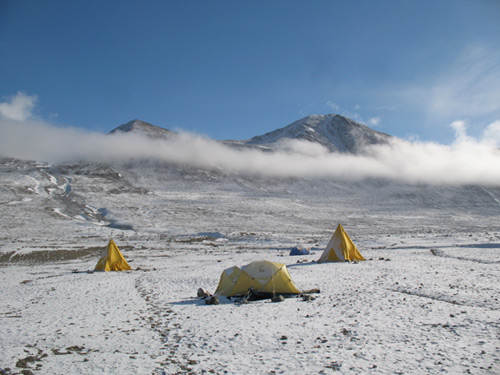
It’s the driest place on the planet. No, not the Sahara Desert, says geography professor Bill Nickling, although his studies have taken him there, too. Try the bottom of the world, and especially the Dry Valleys of Antarctica.
It’s no secret to anyone that Antarctica is the coldest place on Earth. But this land of extremes also claims desert-worthy drought. Not even the African desert is as dry as the Antarctic Dry Valleys, says Nickling, whose version of “southern winters” is also a bit extreme.
A desert geomorphologist, he’s been to the McMurdo research station in Antarctica five times, including this past January, to study how wind sculpts the arid landscape in the continent’s glacial valleys. On an aerial view of the southern continent, the three valleys ― Victoria, Taylor and Wright ― lie like claw marks scratched during the last ice age into the glacier-covered landscape.
On the frozen continent, winds gust up to 150 km per hour. Normal high winds are closer to 80 km per hour, says Nickling, who has taken his Guelph-made measuring instruments to record wind speed and other climatic variables.
It’s not just wind speed that matters, but also air density. “An 80-kilometre-an-hour wind in Guelph is not the same as an 80-kilometre-an-hour wind in Antarctica,” he says.
In the ice-covered interior of Antarctica, cold dense air collects above the continent’s 3,000-metre-high polar plateau. Katabatic winds pulled by gravity rush down the slopes and funnel into the Dry Valleys near McMurdo Sound.
With scientists from Nevada’s Desert Research Institute (DRI), Nickling has camped out in the valleys to study how those winds pick up and move sediment. He’s collected data about wind and other climate variables, and placed tracers in the valley gravel beds to observe yearly sediment movement.
This year’s trip was likely his last. After seven years, funding from the U.S. National Science Foundation has ended for this project. Not incidentally, Nickling will pack up his rock samples ― metaphorically and literally ― when he retires this summer.
But his Antarctic experience has given him a part-time retirement gig. He’s already assembled his souvenirs ― including ventrifacts, or wind-sculpted rocks, and an extensive photo collection ― into a talk and slide show called “Antarctica: The Last Continent.” This year Nickling has spoken to groups in Cambridge and Brantford, Ont. His talk mixes science, travelogue and Antarctic lore. Audiences are always interested to learn about living conditions on the coldest continent.
No one lives there year-round, of course, although the McMurdo base houses several hundred researchers and other visitors at a time. Getting to Antarctica involves flying from New Zealand ― about 5 ½ or eight hours, depending on which plane you get. Full survival gear, including balaclava, parka and long underwear, is mandatory during the flight.
In the valleys ― a helicopter’s ride away from McMurdo ― Nickling slept in a Scott tent tall enough to stand inside and a snap to erect and disassemble. He worked in a polar haven tent resembling a Quonset hut.
As for signs of life, there’s the “Antarctic forest,” consisting of moss and lichens. The wind often carries not just sediments but also microscopic nematode worms. Dotted around the valleys are the bodies of mummified seals, thought to have been lured inland by mirages.
The most common question from listeners: How do you go to the bathroom in Antarctica?
For Nickling, going is less tricky than stowing. All human waste must be removed from the continent, where waste management is so important that this year’s survival refresher course for visitors was a new recycling policy. All waste is collected in recycling boxes at McMurdo for air ferrying out to California.
The toughest question: What’s the purpose of this research? Nickling finds it easier to talk about dust measurements in British Columbia intended to help reduce emissions around a new reservoir, or about studies in Jordan intended to help preserve scarce water resources. Speaking of Antarctica, he says “it’s hard to convince people that there is some value in knowledge for knowledge’s sake.”
Still, there is always extra-planetary exploration. Nickling flashes up a pair of images from his slideshow. One portrays an Antarctic dry valley full of dirt, rocks and boulders. The other, practically its twin, is a shot from a Mars robotic rover. Learn about the driest place on Earth, he says, and we might find out something useful for the first human trip to another arid, rock-strewn world.